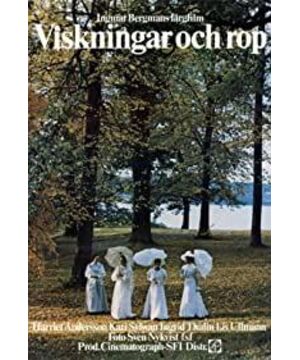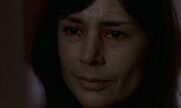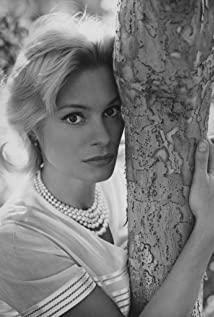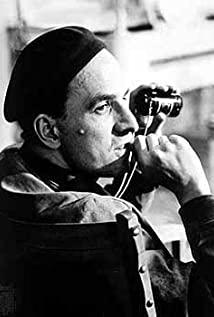“Cries and Whispers” is one of the most famous works produced by Ingmar Bergman in 1971. It tells a story about the humanity—the contradiction and complexity of human nature in the face of life and death, the fragile of kinship in front of selfishness and lust. The three heroines in the movie live different lives, but in the end, they all walk to the same destination on the path of life, that is, living alone and dying alone. Their hearts are isolated from each other despite of growing up together and living in the same house. The estrangement between them has been too strong to eliminate, which is also partly due to their own psychological states and living environment.
Throughout the movie, “Desolateness” is the word which can be used to describe the living states of most characters: Agnes, Karin, Maria, husbands of Karin and Maria…..except for Anna. There is an interesting comparison implied by the director in the movie: the upper-class people, although live a wealthy and easeful life, are more or less involved in personal annoyances and struggling between different interpersonal relationships; while Anna, who serves as a low-down maid, is manage to keep an internal peace and live with a clear conscience. This ironic contrast is thought-provoking:Are we really living a meaningful life regardless of our material conditions and social status? What is the essence of life? What is the real boundary between life and death? Bergman has successfully incorporated these philosophical propositions into his movie to communicate insightful ideas to the audience .
The name of the movie “Cries and Whispers” comes from the comment of Swedish music critic Yngve Flycht on Mozart's Piano Concerto No.21. Bergman borrowed this name to unveil the theme of this movie: “Cries” means the painful yelling in people's mind , the struggling in a complex network of emotions, the conflict between desires and realities; while “whispers” represents the weak but overwhelming voices in the depth of their hearts, the instinctive pursuing for love and warmth, and the most authentic parts of human nature . In general, this movie expresses the doubt of humanity; it criticizes the alienated lifestyle of modern people and calls on love and solicitude among human beings.
Agnes
Agnes grew up lonely. She was seldom cared during her childhood, which we can see in her memory; as a consequence, she was eager for love. When Agnes suffered from serious illness and had few days to live, her only wish was to enjoy the precious family love from her sisters. She wished that Karin and Maria cared for her deep from their hearts instead of only treating her as a patient and carrying out obligations mechanically. However, Agnes's hope was dashed in the end: Karin and Maria abandoned her out of fear and indifference, they turned away in disgust and left Agnes alone in the dark despite of the cries and implores. The selfishness and grimness eventually tear off the deceptive mask, and Agnes finally died in endless pain and despair.
At the end of the movie, we can see a peaceful scene of the three sisters playing together on the lawn, which forms a sharp contrast with the scene before Agnes's death. Bergman reveals the complexity and capriciousness of human nature as well as the helplessness when people facing the fate. Agnes is undoubtedly the biggest sacrifice in this regard.
Maria
Maria is a lucky woman. As the youngest daughter in the family, she was always favored by mother in the childhood; when she grew up, she married a wealthy business man. She lived a easier life compared to her two elder sisters, which gave her a sense of hedonism and egoism. Is Maria happy? Probably the answer is "No". She is a greedy woman. Although Maria has an attractive appearance and is always smiling, her heart is cold and offish; everything she does is to meet her own needs, includes seducing the doctor (sexual desire), showing kindness to Karin after Agnes passed away (getting rid of fears of death), and rejecting Karin after the funeral (protecting herself from being annoyed). She loves herself more than anyone else, and is unconcerned about other people's sufferings. When Agnes cried and screamed in bed,Maria covered her face and ran out of the room, she only wanted to escape the horrors. As the doctor said, impatience, ennui, indifference and indolence constitute her main character. In fact, although Maria has always been pursuing pleasure throughout her life, she has never seized the essence of true happiness.
Karin
Karin is the eldest sister. She was engaged in an unhappy marriage and lived a depressive life. Her husband looked down on her, and she hurt herself with a piece of glass. She pretended to be indifferent and difficult, refused to have any physical contact with other people and lived in her own world. However, when Maria tried to fix the relationship, Karin halted. Karin desired for love and warmth but at the same time resisted to open up her mind. She was full of contradictions and has dual personalities : one is positive and hopes to develop an intimate relationship with external world; while the other one is negative and strongly confrontational. At the end of the film, Karin finally turned into the icy women she used to be, the effort to make up with Maria has been ruined.It seems like a cruel joke played by the God----that is the true nature of life: things rarely happen as you wish.
Anna
Anna is a special character in this film. She is a maid and has served Agnes for many years. She is not a big role in the family since everyone treats her simply as a servant; but surprisingly, when Agnes was tortured by the illness and cried for help, Anna was the only person to stand out and comfort her; when Agnes returned to life and left alone by her sisters, Anna embraced her without fear and stayed with her until death. The loyalty and goodness presented by Anna demonstrate the nobility and dignity regardless of the social status, like a silver lining in the darkness, which breeds the hope of humanity.
In addition, there are several implications in the film telling us that Anna's little daughter has died of illness, relating to the scene that Anna took off her clothes and embraced Agnes to her breast, we may say that it is also the maternity that makes Anna a great woman.
It is worth mentioning that Anna is the only person who did not involved in “Cries & Whispers” in the film. She acted as the goddess that look on people's sufferings and dedicated her love with great compassion; unlike Agnes, Karin and Maria, she possessed a peaceful heart. According to Bergman, “Anna” is taken from the Bible and is the embodiment of gospel; taken in this sense, she is the ideal model of all human beings.
Color
Red is the dominant tone of the whole film. The wall of the house, the furniture, the floor, the curtain, the wine, and even the costume are mostly in red, created an enclosure space and a sense of isolation. Bergman tries to communicate a strong sentiment to the audience: red represents an intense feeling and anxious mood, it reveals the real mental states of heroines who have been trapped in the spiritual shackle and struggled to find a way out. Moreover, red is also the color of blood and soul. Bergman has attached specific significance to the use of color in the film when exploring people's spiritual world; red performs both physical pain and psychological sufferings, which gives us a strong visual shock and enhances the expression of sentiment.
In Cries and Whispers, color is essentially a part of the narrative, which to some extent, is more important than the dialogue and plot. Taken the three heroines as example, Agnes was dressed in white, showing the sickness and loneliness; Maria was always dressed in red, showing the excessive greed and lust; Karin was dress in black from beginning to the end, showing the indifference and inanition of her soul. Bergman has successfully emphasized the different personalities of each character and highlighted the theme of the movie through the perfect master of color, brings us everlasting aesthetic feelings.
Music
Music is seldom used in this film. Most of the scenes are silent without any background music, except for the scene that Karin and Maria break the ice and communicate with each other in excitement. Violin concerto “Sarabande” composed by Bach come out at this moment and replaces the dialogue between Karin and Maria, we can only see their facial expressions and physical movements; language disappears in the music and gives us endless reverie. It is possible that Bergman tries to convey the idea that what they have said is not important ; we should simply focus our attention on the scene and appreciate the fleeting moment of tenderness and happiness. Furthermore, it should be noticed that the gloomy melody of the music may imply the sad ending of the film—nothing will be changed in the end, the good wishes in our mind are only fantasies.
Another piece of music is Chopin's Mazurka, which was arranged at the end of the movie when Anna was reading Agnes's diary. It communicates a sad mood and at the same time, pays respect to the dead.
Movie Style
Cries and Whispers is a typical work of expressionism. Bergman used many long shots and close-up shots in the film to demonstrate the psychological states of different characters. Each piece of memory was started with an expressionless face in close-up with the light conversion , which creates a depressing atmosphere and moves the plot forward. The plot of Cries and Whispers is quite simple and brief: all events took place in the red house within two days; indoor activities constitute the major part of the movie. Unlike Hollywood films, there are no spectacular scene and dramatic plot in Cries and Whispers. What we have seen is simply the depiction of humanity. During the whole movie, Bergman arranged several conversions between beautiful memories and brutal realities, which reached the deepest of our souls,and initiated the introspection on our existence.
View more about Cries & Whispers reviews











